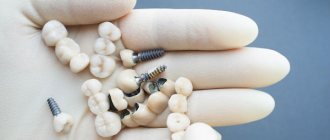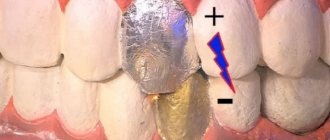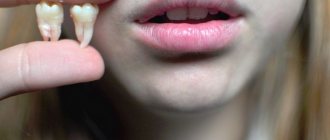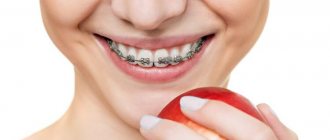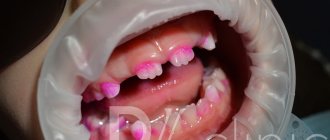Skin condition of a former smoker
The first indicator that gives away a smoker is the skin. This is especially true for the face, neck and hands. After a person gives up nicotine addiction, the body begins to cleanse itself of toxins within a day. These harmful substances are eliminated in several ways: through urine, sweat and skin. Complete restoration of organs and systems can take several months, but the skin clears up in just 6 weeks.
Nicotine entering the cells of the human body activates a gene that promotes the production of the enzyme collagenosis. The latter destroys collagen - the building material for the skin, which ensures its firmness and elasticity.
When a man or woman stops inhaling tobacco smoke, collagen production stops and the skin gradually acquires a natural pink tint.
Due to the deterioration of blood supply to the dermis, the skin does not receive enough oxygen. Because of this, it begins to peel off and darken. Symptoms of oxygen starvation are noticeable for another 14-20 days after quitting addiction. Nicotine also disrupts cell regeneration processes, causing even small wounds to heal 3 times longer than those of a non-smoker and leaving deep dark brown scars.
How hair and nails change when you quit tobacco
You can tell how smoking affects your appearance by looking at the face of a smoker with many years of experience (more than 8 years). But even more visible signs of nicotine in the body appear after quitting smoking cigarettes. And all of them are only positive. The first is hair, nicotine blocked the entry of oxygen and vitamins into the hair follicles, causing the curls to be dull, bulky and often tangled.
After only 4-6 weeks, without the use of special masks or elixirs, the hairstyle will become more spectacular - the number of hairs will increase, the ends will no longer dry out.
The second indicator that will improve is the condition of the nails. When smoking, a minimum of useful substances reaches the fingertips, nails peel and break. After toxins, resins and formaldehydes leave the body, nail growth increases. The cause of the disastrous consequences is a violation of not only the circulatory system, but also a malfunction of the thyroid gland. Nicotine, methane and hydrocyanic acid reduce the production of thyroid hormones, resulting in metabolic disorders.
No medications that have praised reviews will help protect nails from splitting or hair from loss. Only establishing a healthy metabolism and strengthening the immune system can get rid of unpleasant symptoms.
What changes in figure are visible in a person who quit smoking?
The main stereotype regarding those who quit smoking is a rapid increase in body weight. Many screen stars (Alla Pugacheva, Renee Zellweger, Olga Buzova) deliberately depended on nicotine in order to maintain a slim figure. The claim that cigarettes help you lose weight has a logical and medical explanation:
- Instead of lunch or a small snack at work or at home, the smoker chooses another option - a cigarette. Thus, the number of meals per day is reduced by half, the body does not receive protein, fats and carbohydrates in full and, as a result, the figure becomes slimmer.
- Smoking cigarettes is an addiction, and after giving up a bad habit, the body (nervous system) experiences stress. He is looking for another addiction, most often it is food.
- Nicotine dampens the feeling of hunger; after it enters the body, the process of intoxication occurs.
Eye white color and teeth
Another human organ that suffers from exposure to tobacco smoke is the eyes. From oxygen starvation, toxins and tars (all harmful substances damage the eyeballs through smoke or enter through the blood), the eyes become red, watery, and visual acuity and clarity deteriorate. After giving up a harmful addiction, it is almost impossible to return all visual functions to normal. The only thing that will change for sure is the color of the whites; after 8 weeks they will again become snow-white, like a baby’s.
Even children know about yellow teeth in smokers. When tobacco smoke stops entering the oral cavity, a yellow coating of tar, methane, and hydrocyanic acid does not remain on the teeth. Not all former cigarette fans have teeth that become whiter and healthier without dental intervention. But, if you give up nicotine in time, you can save your teeth - prevent caries and tooth loss.
Dental implantation
Implantation is part of the treatment process when a tooth cannot be restored and an implant is installed in its place. The whole process consists of several stages: preparation, removal of the diseased tooth (if it cannot be treated), installation of additional elements, installation of an implant and rehabilitation. Habits that wear down tooth enamel can make a simple procedure risky and dangerous.
Factors influencing dental implantation:
- experience as an addict;
- patient's age;
- general complications after smoking on all teeth;
- condition of the gums and mucous membranes;
- the general condition of the patient is the state of immunity.
Implantation should not be performed during periods of exacerbation of chronic diseases.
The speed of the patient’s recovery is influenced by the condition of the mucous membrane around the adjacent teeth. Before the procedure, it is necessary to treat gingivitis or periodontitis (consequences of long-term smoking).
Implants do not take root well if the patient continues to actively smoke. Wounds take a long time to heal after dental intervention, and pockets of inflammation appear. The worst option for an addict is rejection of the implant due to a bad habit.
Problems with implants
The influence of nicotine is reflected in the condition of the implant. Frequent inhalation of hot air leads to burns of the oral mucosa. People with a long history of smoking suffer from the formation of permanent ulcers around their teeth. Immediately after implantation, such a burn leads to hyperkeratosis of the mucosa. Restoration of damaged tissues does not occur under such conditions. The amount of oxygen that enters the oral cavity affects the speed of recovery (smoking addicts suffer from a lack of it).
Other irritants weaken the wound after implantation: smoking reduces the function of the sebaceous glands, dries out the surface of the palate and mucous membrane, as a result of which a proper blood clot does not form on the wound (after tooth extraction). Against the background of such factors, pathogenic microorganisms multiply quickly, and the implant does not take root.
The effect of nicotine on tooth enamel
Every person knows that smoking has a negative effect on the body. But not everyone realizes their real harm. Cigarettes, despite their small size, contain a fairly large amount of harmful substances. Among them:
- Nicotine;
- Benzene;
- Formaldehyde;
- Nitrosamines;
- Carbon monoxide;
- Resins;
- Poisonous acids;
- Methane.
These and other toxic substances inhaled along with smoke primarily enter the oral cavity, which cannot but affect its condition. Not only the mucous membrane of the mouth suffers, but also the gums and teeth.
Here's what happens when exposed to cigarette smoke:
- Plaque forms on the teeth;
- Microcracks appear on the enamel. These are ideal conditions for the accumulation of bacteria and toxins;
- There is a gradual weakening and destruction of the enamel;
- Inflammatory processes develop on the gums, which also affects the condition of the teeth. In addition, the gums may atrophy. This occurs due to poor circulation and insufficient nutrition;
- Stones form on the teeth;
- The roots of the teeth are exposed and so-called periodontal pockets are formed.
Exposure to smoke causes plaque and stones to form on teeth.
For a person who actively uses cigarettes, the risk of developing dental and gum diseases increases several times. As a result of the fact that the enamel weakens under the influence of harmful substances, and the gums cease to fully protect the roots of the teeth, microflora begins to actively accumulate in the mouth, which becomes the cause of diseases such as caries, pulpitis, and periodontitis.
How does smoking affect oral health?
It is no longer news that smoking tobacco causes physical and psychological dependence and is a serious danger to human health. Hundreds of cytotoxic chemicals that are released when smoking affect both the functionality and immunity of the body. In addition to nicotine (one of the most widely used drugs), cigarette smoke contains nearly 4,000 different compounds, many of which cause cancer. Over a long period of time, smoking affects all parts of the body, and the oral cavity in particular is at particular risk. Smokers' teeth are instantly recognizable due to the adverse effects of tobacco exposure, and unattractive appearance is far from the only oral problem caused by tobacco consumption. Smoking and teeth are not a healthy combination!
Smoking and stains on teeth
Constant smoking over a long period of time leads to a gradual darkening of tooth enamel. The high temperature of the smoke alternates with cooled inhaled air, which leads to the formation of microcracks on the surface of the enamel. The severity and durability of the staining depends on various factors, including the frequency of tobacco smoking. It is possible to restore the aesthetic appearance of your teeth only through professional whitening or using ceramic veneers. It is difficult to remove smoking stains from dentures as the plastic material of the dentures is also susceptible to pigmentation. This is especially noticeable in people who also do not care enough about oral hygiene.
Smoking and bad breath
Smoking causes persistent bad breath - halitosis. The cause of bad breath is the retention and exhalation of tobacco smoke. Nicotine, tar and other substances contained in tobacco smoke accumulate on the teeth and soft tissues of the smoker's mouth - gums, cheek tissue, tongue. Tobacco use negatively affects the composition of saliva, disrupts its pH, which provokes dysbiosis in the oral cavity and can also cause the release of a foul odor; in addition, smoking dehydrates the tissues of the oral cavity, which weakens the moisturizing and disinfecting effect of saliva. Pipe and cigar smokers have more bad breath than cigarette smokers because cigar tobacco contains more sulfur. Breath-freshening toothpastes, mouthwashes, and chewing gums can help mask the odor, but these are short-term solutions.
Smoking and gum disease
Tobacco smoking contributes to the development of inflammatory periodontal diseases and tartar deposition, which in turn increases the level of production of volatile sulfur compounds (VSCs) in the oral cavity. The main harmful side effects of smoking are inflammation and infection of the gums and bones that hold teeth in place.
The patient's oral cavity before the start of treatment at the Dentaprime clinic
Gingivitis
– inflammatory disease of the gums, which affects the superficial tissues of the gums. The nicotine content in a cigarette causes blood vessels to constrict, which leads to decreased blood flow to the gums. In addition, the decreased immune response caused by smoking delays the body's response to toxic microbes in the mouth, i.e. The bacteria present in plaque can cause more harm. Irritated soft tissues “retreat” from the teeth, exposing the neck of the tooth, which is not protected by enamel. In the absence of suitable treatment, gingivitis progresses to periodontitis.
Periodontitis
- This is an “advanced” form of gingivitis. This is a progressive inflammatory disease in the tissues surrounding the tooth, which can lead to irreversible destruction of the gums and bone tissue that support the tooth. As a result of inflammatory processes, so-called pockets are formed in the gums near the teeth, which can lead to bleeding gums, tooth mobility, and the appearance of purulent discharge. This ultimately leads to tooth loss, which is twice as common in smokers as in non-smokers.
Smoking and delayed healing
Smoking negatively affects the healing of wounds in the mouth. This is due to decreased blood flow caused by nicotine and dry mouth. Do not smoke after you have had surgery, including tooth extraction! If, however, you continue to abuse tobacco, your risk of developing alveolitis, or dry socket, increases. After extraction, a blood clot forms in the socket of the extracted tooth, protecting the bone and nerve endings. However, smoking interferes with successful healing and prevents the formation of a blood clot, leaving the bone and nerve endings vulnerable. This can lead to infection and severe pain, bad breath and an unpleasant taste.
Smoking and dental implantation
Smoking can reduce the success of dental treatment. This applies to both natural teeth and dental reconstruction in the form of dental implants. Since nicotine causes vasoconstriction, blood circulation, which is necessary for the successful healing process of postoperative wounds, slows down. Delayed wound healing and increased risk of infection make the implant healing process less predictable. It is recommended to refrain from smoking for at least a few days after the implantation procedure.
Smoking and the senses of taste
One of the changes that smokers notice after completely giving up tobacco is an improvement in their sense of taste. It is known that smokers have reduced sensitivity to smell and taste, since the tongue is constantly covered with viscous thick mucus, which makes it difficult for food to contact the tongue, with those nerve endings that perceive taste sensations. Consequently, smokers often exaggerate the addition of salt, sugar and other seasonings and food. By quitting smoking, you can restore the lost sharpness of smell and taste to some extent, however, how quickly this happens depends on how long and how much the person has been abusing tobacco.
Smoking and oral cancer
Smoking tobacco releases toxins into the oral cavity, as well as irritating and carcinogenic chemicals that alter the lining of the oral tissues. Hot smoke irritates and burns the mucous membrane; chemicals inhibit the formation of the enzyme lysozyme, which disinfects the oral cavity. The mucous membrane becomes drier, saliva lingers less on the ulcers, and renewal of the mucous membrane does not occur. In the absence of timely treatment, cancer of the oral mucosa may develop. Research shows that heavy smokers are 6 times more likely to develop oral cancer than non-tobacco users.
Read other articles: Smoking as a risk factor and measures for successful dental implantation How important saliva is for oral health
External signs of manifestation
Smokers have to worry not only about the internal processes occurring in their teeth, but also about their external condition. Preserving the original color of the enamel, unless, of course, crowns, is beyond the power of any experienced smoker. Therefore, almost all of them are sooner or later concerned about the question of whether it is possible to return the white color of teeth.
The appearance of teeth, of course, does not deteriorate overnight. Although this is a temporary process, it is still irreversible if you do not quit the bad habit in time. The teeth of active smokers are usually characterized by:
- Dark shade. Initially, it may be slightly yellow, but over time it begins to darken, which greatly spoils the aesthetics of the face;
- Unsmooth surface. The structure of the enamel weakens, which makes it appear looser and uneven;
- The presence of carious formations;
- Presence of stone deposits.
Teeth after smoking have stones and an uneven surface
The picture is often complemented by inflamed, bleeding gums, as well as bad breath.
Whitening teeth at home
If you decide to whiten your teeth after smoking at home, you will have to work hard. Regular toothpaste, no matter how good and expensive it is, will never be able to cope with yellow nicotine plaque on its own.
To lighten your teeth at home, you can use proven “grandmother’s” remedies, buy special kits at the pharmacy and, of course, be patient. To achieve a visible effect, you will need to regularly use the chosen product for several weeks or even more.
Ways to restore tooth enamel after quitting smoking
A person who quits smoking has cells renewed within a couple of months. So, the condition of the skin of the face and hair is not dramatic, but it is improving. With teeth, the situation is more complicated. Already formed caries or pulpitis can only be cured with the help of a doctor. The same goes for gums. Diseases such as periodontitis, resulting from long-term smoking, unfortunately, do not tend to disappear on their own.
But former smokers, as a rule, are tormented not only by the issue of dental treatment. Those people for whom their own appearance is of great importance are also concerned about how to whiten their teeth after smoking.
First of all, it must be said that after quitting smoking, the color of your teeth will naturally lighten a little, but no one can guarantee that they will become as white as before smoking. Therefore, the best thing a former smoker can do for their teeth is to help them through this process.
Dental whitening methods
The fastest way to restore the white color of your teeth is to see a dentist. Modern technologies make it possible to lighten teeth by several shades at once in just a few professional procedures.
Here's what a dentist can offer a patient with a similar problem:
- Ultrasonic cleaning. This method involves brushing teeth using ultrasonic vibration. This involves using water and cleaning powder. As a result of the procedure, surface plaque and stones are removed. The enamel becomes smoother to the touch, and its color, although not dramatically, becomes lighter. This procedure has no serious contraindications. It will be undesirable for sore gums;
- Professional whitening. Surely many people have heard about procedures such as zoom. Their meaning is that a special gel is applied to the teeth and exposed to ultraviolet light. As a result, the active substances of the gel react with the components of the enamel and lighten it. Unlike the first method, professional whitening allows you to change the color of your teeth by more than 4-5 tones. This procedure has a number of contraindications. So, it is not suitable for sensitive teeth.
Ultrasonic cleaning is a way to whiten teeth after smoking
If these methods do not help and it is impossible to return the white color to the teeth, the dentist may suggest installing crowns. One of the most popular types today is veneers.
Cosmetical tools
Professional teeth whitening procedures are not affordable for everyone. Most people in the struggle for an aesthetic smile prefer to use cosmetics. These may include:
- Whitening toothpastes. They differ in active substances, degree of impact and, of course, results. Moreover, in stores you can also find special pastes for smokers. It is important to remember that it is recommended to use toothpastes with a whitening effect no more than once a day and alternate with softer ones;
- Rinse aids. They are usually used in combination with toothpastes and can enhance the effect;
- Home whitening systems. They are different. These include mouth guards, lighting devices, and stripes. Their difference from professional procedures lies in their more superficial effects. These systems require mandatory compliance with the instructions for use, otherwise you can damage the enamel or burn your gums.
Features of plaque from tobacco smoke
Plaque that appears on teeth can be of different colors:
- yellow and brownish;
- white;
- black;
- green.
Important! The most harmless is a white coating. It forms on the teeth quite quickly, for example, overnight or during the day. The reason for its appearance is the food consumed, as well as bacteria and microbes that multiply on the surface of the teeth.
Such plaque, if removed in a timely manner, does not pose any particular danger. It can be removed during regular brushing with a toothbrush. Green plaque is rare and mainly appears due to damage to the pellicle (the protective layer of the tooth located on the surface of the enamel). Also, this shade of plaque can be caused by a fungal infection of the oral cavity.
Plaque formation is a result of insufficient oral care. To remove plaque, you need to brush your teeth after every meal or rinse your mouth with special solutions. Cleaning the inner surfaces of teeth and cleaning hard-to-reach places is of great importance.
Yellow and brown plaque appears due to tooth pigmentation caused by smoking, as well as from excessive consumption of strong tea and coffee. This type of plaque is difficult to remove on your own. The easiest way in such a situation is to have it professionally cleaned by a dentist. Black plaque is an advanced form of pigmentation, which initially had a yellow or brown tint.
Preventing dental plaque from nicotine
Of course, it is almost impossible to completely avoid the deterioration of your teeth if you have the habit of smoking cigarettes every day. But you can try to protect them as much as possible. To do this, you should listen to the following recommendations:
- Maintain good oral hygiene. You need to brush your teeth at least 2 times a day. In addition, smokers should rinse their mouths after each cigarette;
- Use high-quality teeth cleaning products: brushes, pastes, rinses, dental floss;
- Watch your diet. A number of products contribute to the deterioration of dental health. This primarily applies to sweets, black coffee and tea, carbonated drinks;
- Regularly undergo preventive examinations at the dentist. This will allow problems to be identified at an early stage and treated in a timely manner.
But the most effective method of preventing dental condition in this case, of course, is to quit smoking.
A friend of mine recently quit smoking, and now she’s taken care of her teeth and says she needs to whiten them. But will quitting smoking affect your teeth? Will your teeth whiten if you quit smoking?
When a person smokes or even quits smoking, his teeth remain ugly. It's unpleasant to look at such a smile. However, there are ways to correct this oversight. Among them:
- Application of strawberries or wild strawberries. The berry is simply passed over the teeth, squeezing out the juice. Such products contain useful ingredients that will help whiten enamel.
- Hydrogen peroxide. This method will give a more noticeable effect. A piece of cotton wool is soaked in hydrogen peroxide and the teeth are wiped. The result will be noticeable after the first two or three procedures. However, it is important not to overdo it. Hydrogen peroxide can destroy enamel.
The following methods will help whiten the teeth of a former smoker. However, it is advisable to consult your dentist before using them.
How to deal with it
To get rid of darkening of the enamel, only complete cessation of smoking, proper oral care and the use of modern dental products - teeth whitening and tartar removal - will help.
Special whitening pastes or other oral care products should be used with caution and only after consultation with your dentist. Due to smoking, tooth enamel is severely damaged, and strong drugs can completely destroy it, causing the development of caries or further damaging the loosened mucous membrane of the gums.
It is also recommended to stop drinking strong coffee, tea or other coloring drinks, and also eat less sweets, this will help quickly restore damaged enamel and quickly restore whiteness to your teeth.
